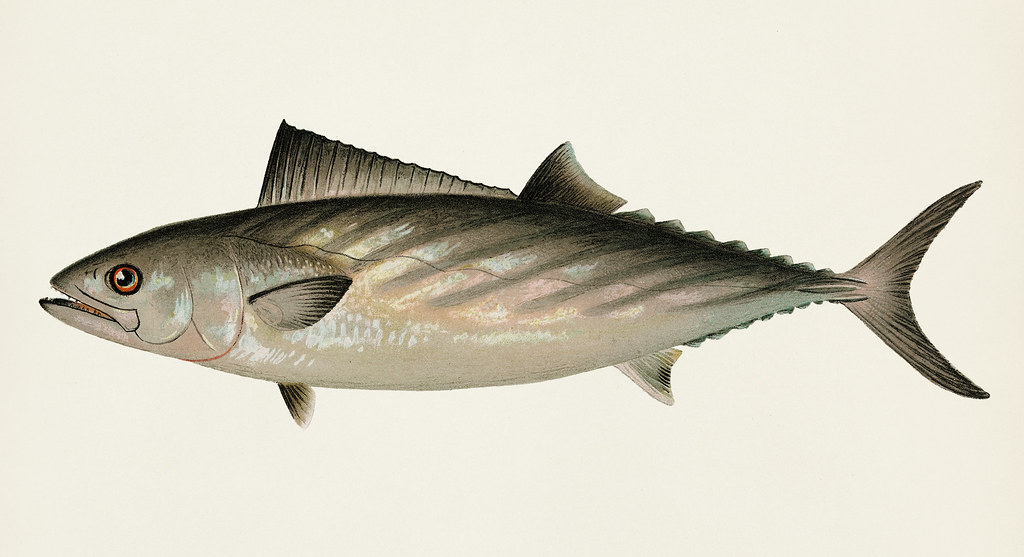The Meaningful Symbolism Behind the Bonito Fish

With their powerful bodies and vibrant colors, bonito fish have captivated cultures across the world. These large, fast fish have become interwoven into art, legends, and spiritual practices.
In this beginner’s guide, we’ll explore the varied symbolism and importance connected to the bonito:
- What bonito fish represent in different cultures
- Their role in ancient myths and folklore
- How they’re depicted in art and spiritual rituals
- Key reasons these fish hold such meaning
Whether you’re an angler, artist, or simply curious, understanding bonito symbolism brings new depth to these incredible fish.
An Overview of Bonito Fish
Bonito refers to a tribe of eight species of large, predatory fish in the mackerel family. Most bonito species live in tropical and subtropical oceans around the world.
Their most distinctive features are:
- Streamlined, powerful bodies built for speed
- Metallic blue, black, or greenbacks with silver undersides
- Horizontal stripes or lines along their sides
Bonito are apex predators, feeding on smaller bait fish and even squid. They have razor-sharp teeth and can reach sizes over 40 pounds.
So in many ways, bonito fish reflect qualities like strength, speed, and hunting ability. This helps explain why they take on such symbolic importance in human culture.
Bonito Symbolism in Japanese Culture
In Japan, the bonito holds deep spiritual meaning, specifically the skipjack tuna (Katsuwonus pelamis) species.
Power and Determination
Japanese art often depicts bonito bravely swimming up towering waterfalls. This represents the immense power and determination needed to conquer adversity.
It’s tied to a legend of a koi fish transforming into a dragon after climbing a waterfall. The bonito essentially takes the koi’s place in modern adaptations.
Prosperity
- A bonito swimming downstream signals wealth and fortune lie ahead.
- Serves as a sign that one’s life journey has led to success.
Abundance
- Schools of bonito represent bounty from the sea.
- Their return each year brings promises of plenty.
The Japanese pay homage to the bonito’s gifts through spiritual ceremonies like the “first bonito” ritual.
Importance of Bonito in Pacific Islander Culture
On small Pacific islands, bonito take on a vital role, both for sustenance and spiritual guidance.
The people of these remote islands depend on fish like bonito for survival. So the seasonal return of these fish brings enormous religious meaning.
Gods and Ancestors
Pacific Islanders traditionally believe bonito fishing grounds are guarded by ancestral gods and spirits.
Strict rituals must be performed to gain the blessing of these deities before catching any fish.
First Fish Ceremonies
The first bonito caught each year holds incredible importance. The prized fish is presented as an offering to gods, chiefs, and elders in elaborate ceremonies:
- Ensures continued abundance from the sea
- Chance to gain wisdom by communing with ancestral spirits
- Unites families and communities in shared tradition
Totems and Guardians
- Bonito motifs feature heavily in Pacific art and jewelry.
- Symbolize guidance, fortune, fertility, strength.
- Express the intimate relationship between islanders and the sea.
Bonito Symbolism in Ancient Mediterranean Societies
The Atlantic bonito was a popular subject in ancient Greek and Roman art. Its image conveyed key cultural values.
Swiftness and Force
- Often shown vigorously chasing smaller fish.
- Represents speed, power, and martial ability.
Intelligence and Strategic Thinking
- Displayed using complex hunting techniques in battle-like scenes.
- Symbolized wisdom, strategy, and mental strength.
Abundance and Prosperity
- Frequently depicted in schools or “shoals.”
- Signified material wealth, success, and full nets.
These societies also prized bonito as a delicious, prestigious food. Consuming it reflected high social status.
Shared Meaning Across Cultures
No matter the specific culture, many universal themes arise in bonito symbolism:
Strength – Their large size, speed, and predatory dominance symbolize raw power and physical abilities beyond the average fish.
Abundance – Traveling and schooling in great numbers, they represent plentitude and fortune.
Determination – Swimming immense distances against currents and obstacles displays monumental effort and perseverance.
Guidance – Believed to carry messages and blessings from ancestral gods and spirits to guide humans.
Key Takeaways on Bonito Fish Symbolism
- In Japanese art and myth, bonito represents strength, prosperity, abundance, and determination
- Pacific Islanders rely on bonito for survival and believe they link humans to ancestral gods
- Ancient Mediterranean societies used bonito to symbolize speed, intelligence, wealth, and status
- Universal symbolic themes include strength, sustenance, guidance, perseverance, and fortune
The bonito’s power, migratory nature, and fighting spirit underpin its cultural importance across civilizations. These exceptional fish continue to hold deep meaning today.
FAQ about Bonito
What exactly are bonitos?
Bonitos are medium-sized predatory fish belonging to the family Scombridae, which they share with mackerel, tuna, and Spanish mackerel tribes.
How many species of bonito are there?
There are eight species of bonito spread across four genera. Notably, three of these genera contain only one species each.
Can you eat bonito?
Yes, bonito is edible and popular in various culinary traditions. Its meat has a firm texture and moderate fat content, suitable for grilling, pickling, or baking.
Are bonitos related to tuna?
Bonitos closely resemble the skipjack tuna and are part of the same family. However, they are not marketed as tuna in all countries
Where can you find bonitos?
Bonitos are found in various oceans around the world. The Atlantic bonito, for example, is also common in the Mediterranean and the Black Sea.





